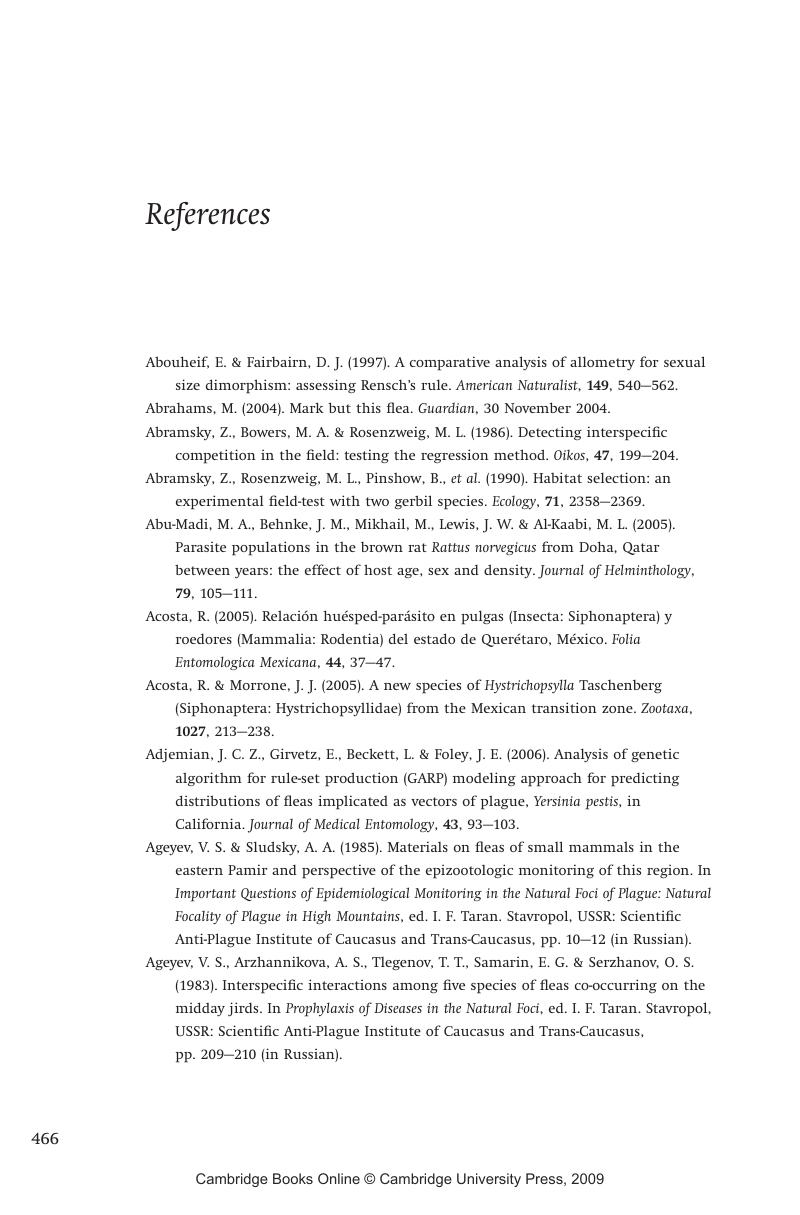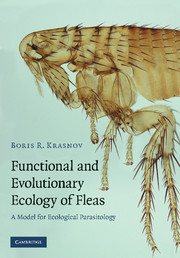Kosminsky, R. B., Bryukhanova, L. V., Darskaya, N. F., et al. (
1974). Annual cycle of Ceratophyllus (Nosopsyllus) consimilis Wagn., 1898 (Ceratophyllidae, Siphonaptera) in the Stavropol Upland. In
Particularly Dangerous Diseases in Caucasus: Proceedings of the 3rd Scientific–Practical Conference of the Anti-Plague Establishments of Caucasus on Natural Focality, Epidemiology and Prophylaxis of Particularly Dangerous Diseases, 14–16 May 1974, ed.
Pilipenko, V. G..
Stavropol, USSR: Scientific Anti-Plague Institute of Caucasus and Trans-Caucasus, pp. 152–154 (in Russian).
Google Scholar
